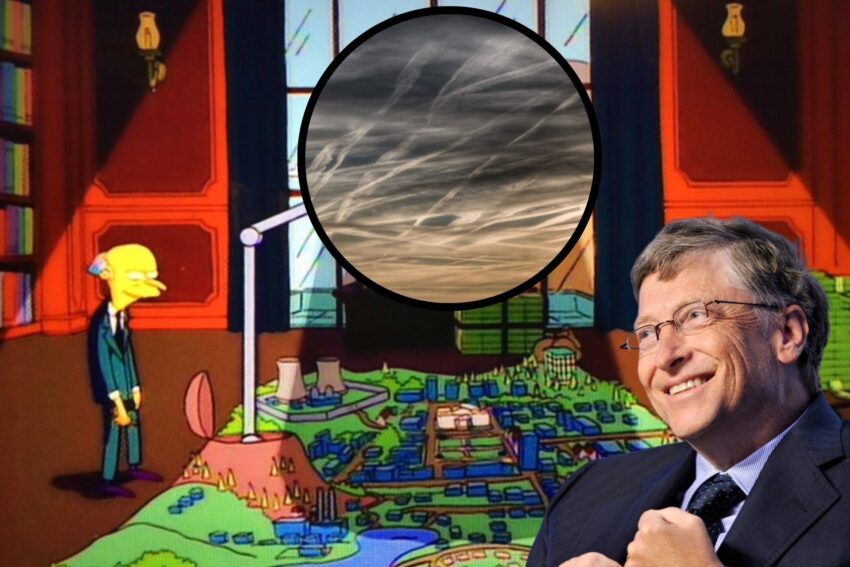Solar geoengineering, also known as climate engineering or climate intervention, is a controversial topic that involves the deliberate manipulation of the Earth’s climate to counteract the effects of global warming. One of the most discussed proposals is the idea of spraying particulates into the atmosphere to reflect sunlight away from the Earth.
Proponents of solar geoengineering argue that it could be a quick and relatively inexpensive way to slow down or even reverse the effects of climate change. One of the most prominent supporters of this idea is Bill Gates, who has invested in a project to develop technology for this purpose.
CNBC: “Bill Gates is backing the first high-altitude experiment of one radical climate change solution. Creating a massive chemical cloud that can cool the earth. It’s called solar geoengineering and it’s highly controversial.”‼️🙏👇 pic.twitter.com/JMn6TMoXlq
— Sophie still fighting 💥💫🙏 (@mariusknulst) July 15, 2024
However, it’s not just Bill Gates talking about solar geoengineering, as such proposals have been discussed about for some time now. Former CIA director John Brennan talked about how excited he was at the prospect of aerosol geoengineering at a Council on Foreign Relations meeting in 2017.
The Meteorological Office (aka the Met Office), the UK’s national weather and climate service, has also talked about spraying pollutants and neurotoxins (aluminum) in the sky in an effort to fight “climate change.”
Injecting the sky – Met Office confirm Geoengineering
Injecting the Atmosphere with Aerosols
Met Office Expanding the Earth’s albedo through the process of cloud seeding involves the introduction of light-reflecting particles, like aluminum, barium, strontium, and thorium, into… pic.twitter.com/vRzAmh4CLM— Camus (@newstart_2024) August 9, 2024
Recently, there was a front-page story in the New York Times about how scientist David Keith wants to spray sulfur dioxide, a pollutant, into the stratosphere in an effort to lower temperatures.
Solar geoengineering makes the front page of the Times.
The basic scheme is to mimic volcanos and pump reflective sulfur dioxide into the upper atmosphere.
Riska abound, but our current path is risky too.
And Americans like silver bullet solutions.https://t.co/HXcD04kfF0 pic.twitter.com/ICqqhekkS1
— Tom Maguire (@Tom_Maguire) August 4, 2024
Obviously many people have concerns about this project.
Because it would be used in the stratosphere and not limited to a particular area, solar geoengineering could affect the whole world, possibly scrambling natural systems, like creating rain in one arid region while drying out the monsoon season elsewhere. Opponents worry it would distract from the urgent work of transitioning away from fossil fuels. They object to intentionally releasing sulfur dioxide, a pollutant that would eventually move from the stratosphere to ground level, where it can irritate the skin, eyes, nose and throat and can cause respiratory problems. And they fear that once begun, a solar geoengineering program would be difficult to stop.
“The whole notion of spraying sulfur compounds to reflect sunlight is arrogant and simplistic,” Canadian environmentalist David Suzuki said. “There are unintended consequences of powerful technologies like these, and we have no idea what they will be.”
It should be alarming that so many world leaders, media outlets and government agencies are seriously proposing taking away sunshine, which is necessary for the survival of life as we know it. Less sunshine means fewer crops, an increase in mental health disorders (see Seasonal Affective Disorder), less power being generated by those expensive solar arrays everyone was incentivized to install, and so many other drastic consequences.
Beyond blocking out the sun, there are concerns about how the particulates used in solar geoengineering might affect life once they fall to the Earth. Spraying contaminants onto private land is a fundamental violation of property rights. People would be up in arms if their homes and farms were being crop-dusted with pollutants at low altitudes by climate extremists, but the “green” globalists are hoping people don’t really notice when the planes are spraying high up in the stratosphere.
In 2023, Mexico banned all solar geoengineering experiments, citing concerns about the potential impact on the environment and human health, after unauthorized solar geoengineering flights sprayed their skies in an experiment conducted by an American company.
🇲🇽 Mexico
CIEL Welcomes Mexican Government Announcement on Solar Geoengineering Ban#Chemtrails pic.twitter.com/LDKk6FVYqA
— Claddagh (@TMac572002) February 2, 2023
Just this year, Tennessee banned any programs intended to block out the sun.
🚨🇺🇸 Tennessee BAN Geo-Engineering
“We do not consent to this intentional blocking of the sun”
Listen to the Tennessee Agriculture & Natural Resources Subcommittee On Spraying Of Aerosols In our Atmosphere.
But wait isn’t it just all a conspiracy? pic.twitter.com/cL4lAzmpWQ
— Concerned Citizen (@BGatesIsaPyscho) March 31, 2024
Some people believe that chemtrails, the long white trails left by airplanes, are already part of a secret government program to implement solar geoengineering. This highlights the level of suspicion surrounding this topic and distrust for those who think they know what’s best for “the greater good.”
This controversial topic raises many ethical, environmental, and health concerns. While it may seem like a quick and easy solution to the problem of climate change, the potential and unintended consequences could be far worse than the problem itself, if there really is a problem with warmer temperatures at all. People should understand by now that giving bureaucrats the ability to play God with the world’s inter-connected climates and ecosystems is a very scary proposition. In my opinion, billionaires scheming to block out the sun should stay in the realm of fiction.


